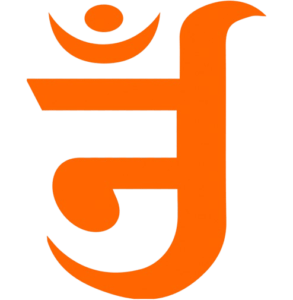Jainism is an ancient Indian religion that emphasizes non-violence, truth, and asceticism. It teaches that the path to spiritual purity and enlightenment is through a disciplined life of harmlessness and renunciation. Here are some key aspects of Jainism:
- Non-violence (Ahimsa): Central to Jainism is the principle of non-violence. Jains believe in causing no harm to any living being, whether through thought, word, or action. This extends to all forms of life, including insects and microorganisms.
- Multiplicity of Truth (Anekantavada): Jainism teaches that truth is complex and multifaceted. This principle encourages understanding and respecting different viewpoints, as reality can be perceived in various ways.
- Non-attachment (Aparigraha): Jains practice non-attachment to material possessions and worldly desires. This principle promotes a simple and ascetic lifestyle, reducing desires and practicing contentment.
- Five Vows (Mahavratas): Jain monks and nuns take five great vows:
- Ahimsa: Non-violence.
- Satya: Truthfulness.
- Asteya: Non-stealing.
- Brahmacharya: Celibacy or chastity.
- Aparigraha: Non-attachment.
Lay followers of Jainism take lesser vows, adapting these principles to their daily lives.
- Karma and Liberation: Jainism teaches that karma, the accumulation of good and bad deeds, binds the soul to the cycle of birth and death (samsara). The goal of a Jain is to achieve liberation (moksha) by purifying the soul of karma through ethical living, meditation, and self-discipline.
- Tirthankaras: Jainism has a lineage of 24 Tirthankaras, who are spiritual teachers and role models. The most recent and widely known Tirthankara is Mahavira, who lived in the 6th century BCE.
- Two Major Sects: Jainism is divided into two main sects, the Digambara and Svetambara. They differ in practices and beliefs, particularly concerning the attire and daily rituals of monks and nuns.
Jainism is known for its rich philosophical traditions and contributions to Indian culture, including literature, art, and ethics. It is a relatively small religion in terms of followers but has a significant cultural and spiritual influence in India and beyond.
Holy Scriptures of Jainism
The Jaina scriptures are categorized in several ways:
1. **Angapravista and Angabahya**: These classifications distinguish texts that are part of the Anga literature from those that are supplementary.
2. **Kalika and Utkalika**: These refer to different types of texts within the Jaina tradition.
3. **Anga, Upanga, Chedasutra, Mulasutra, Prakirnaka, and Culika**: These are various categories of Jaina scriptures, with each group representing a different type of literature.
4. **Krta and Niryuhana**: These terms categorize scriptures based on different criteria.
5. **Carananuyoga, Dharmakathanuyoga, Ganitanuyoga, and Dravyanuyoga**: These are different categories of Jaina texts that cover conduct, stories of dharma, mathematics, and substance philosophy.
6. **Prathamanuyoga, Karananuyoga, Carananuyoga, and Dravyanuyoga**: These are another set of categories that focus on specific teachings and philosophies within Jainism.
The existing Agamas are written in Prakrit, particularly in a dialect known as Ardhamagadhi, which was spoken in the Magadha region and blended with other dialects. This is the language in which the Svetambara Agamas are written. In contrast, the Digambara Agamic literature is found in Sauraseni Prakrit. Therefore, the Agamas can also be classified into two linguistic categories: Ardhamagadhi and Sauraseni.
The Murtipujaka Svetambaras acknowledge 45 or 84 Agamas, while the Sthanakavasis and Terapanthis accept 32 Agamas. The Digambaras, however, believe that the original Agamas have been lost. Instead, they recognize the works of scholars like Pushpadanta, Bhutavali, Kundakunda, Vattakera, Sivarya, Umaswami, Samantabhadra, Akalanka, and other Acharyas as the authoritative texts in place of the original Agamas.
Jainism has a vast and complex body of scriptures, primarily written in Prakrit, Sanskrit, and later in other languages. The scriptures are divided into two main categories, corresponding to the two major sects of Jainism: Śvetāmbara and Digambara.
Swetambara Scriptures
The Śvetāmbara tradition recognizes a set of scriptures known as the Āgamas. There are 45 principal texts, divided into various categories:
- Angas (12): These are considered the primary canonical texts, covering a wide range of topics including cosmology, ethics, philosophy, and conduct.
- Upāṅgas (12): These are supplementary texts to the Angas, often elaborating on specific topics.
- Chedasūtras (6): These texts deal with the conduct and discipline of monks and nuns.
- Mūlasūtras (4): These include basic texts like the Daśavaikālika Sūtra and Uttarādhyayana Sūtra, often used in daily study and rituals.
- Prakīrṇakas (10): Miscellaneous texts that cover various subjects.
- Cūlikāsūtras (2): Texts that include the Nandīsūtra and Anuyogadvārasūtra, dealing with logic and epistemology.
Digambara Scriptures
The Digambara tradition has a different set of scriptures, as they believe the original scriptures were lost over time. However, they recognize several important texts written by later scholars:
- Śatkhaṇḍāgama: This is considered the most important text for Digambaras, written by Acharya Pushpadanta and Bhutabali.
- Kārikā: A commentary on the Śatkhaṇḍāgama by Virasena.
- Kundakunda’s Works: Key texts like the Samayasāra, Pravacanasāra, and Niyamasāra are central to Digambara philosophy.
- Tattvārthasūtra: This text, composed by Acharya Umaswati, is a fundamental philosophical text accepted by both Śvetāmbaras and Digambaras, although with minor differences in interpretation.
Jainism has a rich literary tradition that extends beyond these primary scriptures, including texts on philosophy, ethics, rituals, cosmology, and more, written over the centuries by various scholars and monks.
Symbol of Jainism Religion

The primary symbol of Jainism is the Jain Prateek Chihna, which is a composite emblem that represents the core principles and philosophies of the religion. The symbol was officially adopted in 1975 during the 2500th anniversary of Lord Mahavira’s nirvana (liberation). The Jain Prateek Chihna includes several elements, each with specific meanings:

Hand with Wheel (Ahimsa and Dharma Chakra): The raised hand symbolizes the vow of non-violence (Ahimsa). The wheel inside the hand is called the Dharma Chakra, representing the resolve to stop the cycle of violence and promote righteous living. The wheel has 24 spokes, symbolizing the 24 Tirthankaras who have taught the path to liberation.

Swastika: This ancient symbol represents the four states of existence (gatis) in which a soul can be born: heavenly beings (devas), human beings (manushyas), hellish beings (narakis), and animals/plants (tiryancha). The swastika also symbolizes the fourfold community of monks, nuns, laymen, and laywomen
- ये भी पढे – जैन धर्म का इतिहास | Jainism History
- ये भी पढे – Jain Mandir
- ये भी पढे – आत्म-कीर्तन JAIN ATAM KIRTAN
- ये भी पढे – Bhagwan Mahaveer Swami
- ये भी पढे – Bhagwan Aadinath (ऋषभदेव)
Note
Jinvani.in मे दिए गए सभी स्तोत्र, पुजाये और आरती जिनवाणी संग्रह के द्वारा लिखी गई है, यदि आप किसी प्रकार की त्रुटि या सुझाव देना चाहते है तो हमे Comment कर बता सकते है या फिर Swarn1508@gmail.com पर eMail के जरिए भी बता सकते है।


